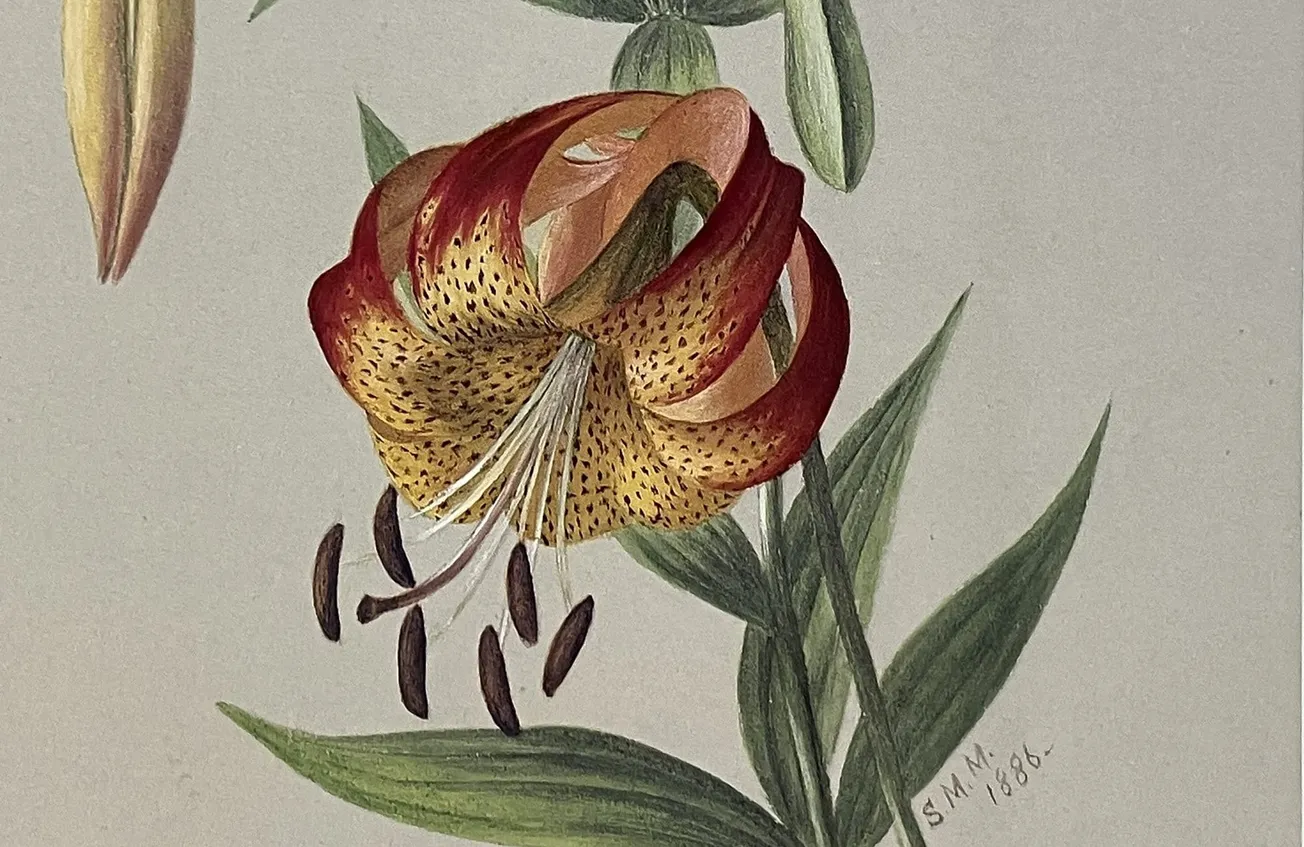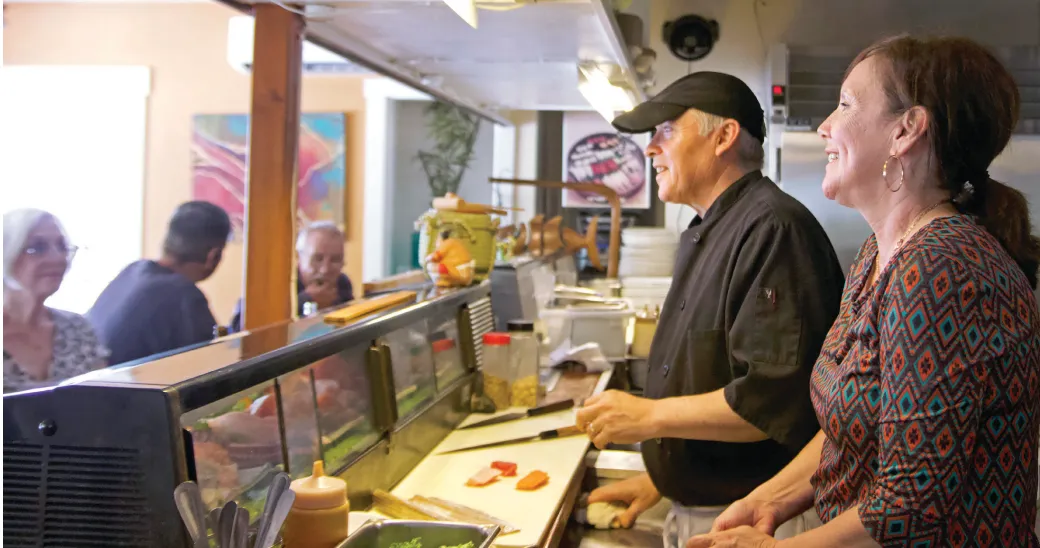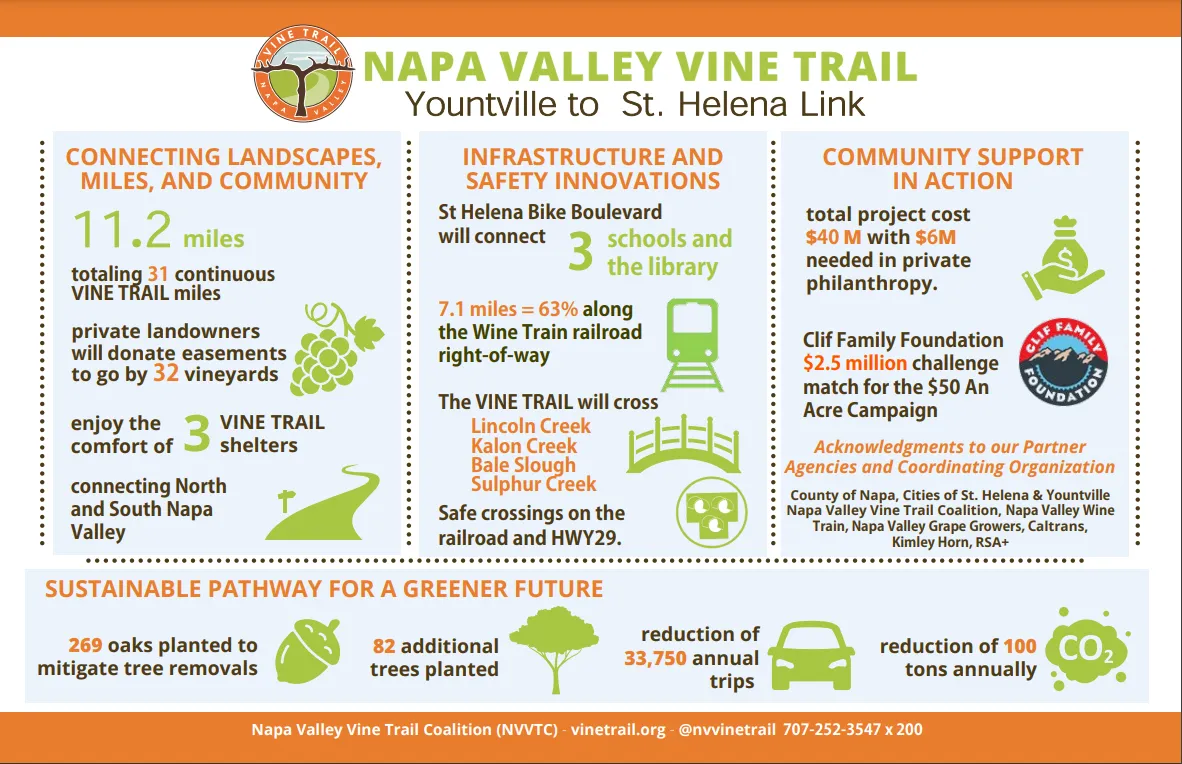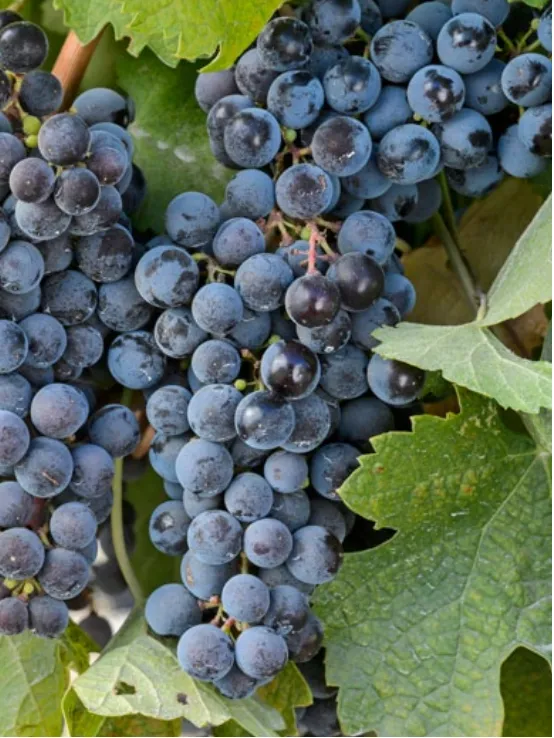The indigenous flowers of Napa Valley have inspired more than exclamations of admiration. These fleeting springtime beauties were the muses for two women who lived in Napa County in the late 19th and early 20th centuries. Clara Adele Hunt and Sophie Alstrom Mitchell were so enamored with the native flora they sought out these plants as subjects for their art and botany studies. As a result, these two “Wildflower Ladies” significantly contributed to the discovery and recording of California native plants.
The first of the ladies is Clara Hunt who “was a great lover of flowers,” according to her 1932 St. Helena Star obituary. “Her particular delight for many years was the study of wildflowers.” Her love for wildflowers resulted in a botanical legacy, the Clara Hunt’s milk-vetch that she discovered and was named in her honor.
Her path to Napa Valley began decades before her discovery in 1909 of this unique Napa County wildflower. Clara was born at Claremont, New Hampshire, circa 1859-1860, to Edward and Lucy Pike. By 1872, she, her parents and her older sister Minnie were living in Alameda County.
After graduating from school, marrying George Blodgett in 1878 and working as a house servant, Clara received “a liberal education in botany,” her obituary noted. By 1889, she was unattached and teaching at Oakland’s Temescal school.
In 1892, 32-year-old Clara married a 61-year-old widower, prominent St. Helena businessman, Daniel Otis Hunt. They lived together until his death in 1915 at their Hunt’s Grove home, which still stands at Hunt Avenue and Edwards Street in St. Helena.
Clara was active in the St. Helena Grace Episcopal Church and occasionally taught botany at the Catholic convent’s Ursaline Academy. She co-founded the St. Helena Women’s Improvement Club and organized the annual St. Helena flower show.
Clara spent countless hours exploring the natural Napa County landscape to document the local flora. She frequently sent plant specimens to a fellow native plant enthusiast and University of California botanist, Willis Linn Jepson.
In March-April 1909, Clara found an unknown and diminutive plant. Jepson confirmed it was a new and rare native plant that he named “Clara Hunt’s milk-vetch.” (It is officially known as Astragalus clarinus.) Today there are only four known habitats of Clara Hunt’s milk-vetch — three in Napa County and one in Sonoma County. “Yes, I remember the little Astragalus,” Clara wrote to Jepson. “(I) have never found it in any great quantity since... The field was a mass of tiny, white, blue-tipped blooms.”
While living in St. Helena, Clara extended her wildflower quest throughout California. Sometime before her death in April 1932, she wrote to Jepson, “The world is good to me and beautiful, and I take what I can and am thankful...”
The second Wildflower Lady, Sophie Marie Nordstrom Alstrom Mitchell, resided even longer in Napa County. However, her botanical contributions and paintings of arranged wildflower bouquets were nearly lost and forgotten.
Her path to becoming a local resident and native plant enthusiast began on October 18, 1858, when she was born in Carlshamm, Sweden, to the recently widowed, 19-year-old Marie Nordstrom. Her father, the late John Nordstrom, had been an artist and textile designer.
Her mother became friends with Swen Ahlstrom, later Alstrom, who, on June 28, 1860, became a partner in the Oriental Hotel in San Francisco. That day was an auspicious one for him; it was also the day Marie and Sophie Nordstrom joined him in San Francisco. Marie married him, and shortly thereafter he adopted Sophie.
In March 1862, 3-year-old Sophie and family moved to their newly purchased home at White Sulphur Springs resort in St. Helena. In time, Sophie would acquire several new siblings.
During the early days of her life at the resort, Swen, an outdoors enthusiast, instilled in her a respect for nature. She was also encouraged to paint and draw. While attending the local Young Ladies Seminary, a finishing school once located on Seminary Street in Napa, Sophie refined her artistic talents and skills and also studied botany. Following her 1879 graduation, Sophie returned to the seminary as an assistant art instructor. She also taught art in St. Helena.
A 1984 Napa Valley Museum art exhibit brochure described Sophie’s painting methods this way: “Using very fine camel’s hairbrushes on paper imported from England, she applied a white base coat, then meticulously over-painted with transparent watercolors, achieving a sparkling almost three-dimensional quality.”
Sophie signed her paintings with just her initials. In 1883, the initials changed when she married 42-year-old Rev. James Mitchell. Before he died in 1926, they had two sons, John and James.
Mitchell founded the St. Helena Presbyterian church in 1875 and served that parish for 43 years. During his ministry travels he always picked wildflowers for his wife to paint.
In 1894, Sophie and her paintings had their moment in the spotlight. That year she showed her work at the Midwinter Fair in San Francisco. Her exhibit received considerable acclaim. “Sophie Mitchell is the master of watercolors, and excels in the wildflowers of our state,” wrote an unnamed art critic.
Sophie continued to live in St. Helena and paint until her death on August 30, 1940. At that time, her family knew of only 38 of her paintings and were unaware that she had sold several dozen others.
In 1976, 64 of those paintings were discovered in the attic of a New England residence, though how they ended up there remains a mystery. After the discovery of Sophie’s forgotten paintings, two different institutions studied them to determine their origin and the artist’s identity. The artworks began their journey home when the Napa County Museum Association, now Napa Valley Museum, purchased 50 of them in 1976. They purchased the remaining 14 in 1983.
In celebration, the museum mounted an exhibit of her work titled “A Fondness for Flowers: 19th Century Watercolors by Sophie Alstrom Mitchell.”
Nearly lost to time like their beloved and the fleeting wildflowers, these Wildflower Ladies driven by their love of nature recorded and preserved local and regional native plants for generations to come.








